Puffins – Getting into the Groove
On July 16th 2020 we sailed on calm seas from the fishing village of Staithes down the beautiful coastline of the North York Moors National Park. I was guiding on one of our Yorkshire Coast Nature Seabird and Whale boat trips. On the trip I photographed lots of Atlantic Puffins with a wide variety of bill sizes and colours. After the trip I decided I needed to refresh my knowledge of these fantastic birds.
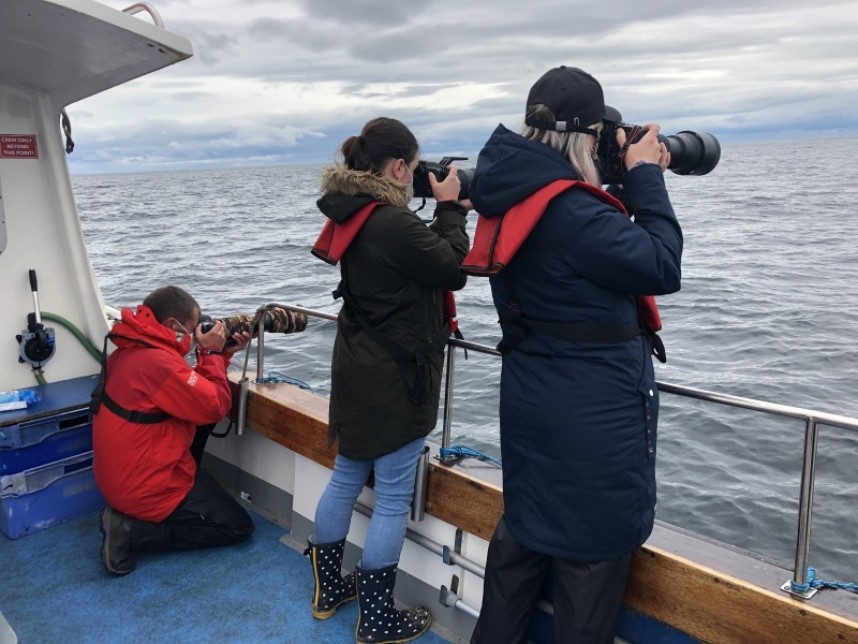
Puffins are tough birds. When the juvenile Puffin I photographed left its nesting burrow almost certainly at night, it had no help from its parents. No shelter from predators, no training on how to feed or migrate. Out at sea they can be completely on their own until they meet other Puffins, then maybe they benefit from watching their elders between the waves…
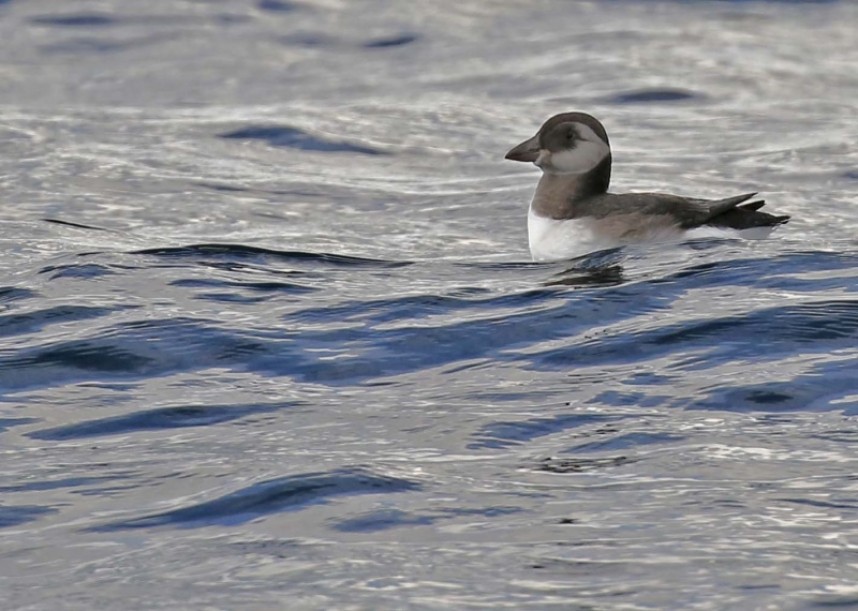
Atlantic Puffin (juvenile) 16 July 2020 © Richard Baines
Migration away from the breeding colony really gets going in August with many birds moving long distances. A study using geolocators fitted to Puffins in a Welsh colony found an amazing range of wintering sites were used. During the winter these Puffins moved about significantly travelling to far flung places as far apart as Greenland to the Bay of Biscay. However initially, the tagged birds nearly all migrated to the same destination they had visited in their previous autumn before moving on to other areas.
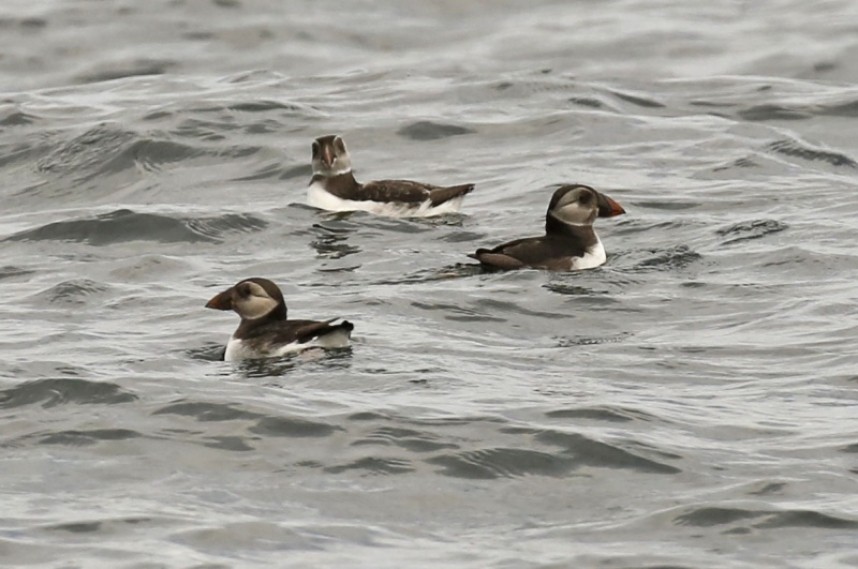
Atlantic Puffin (immature birds first or second year) 16 July 2020 © Richard Baines
Interestingly this research also discovered small groups of Puffins were more likely to gather together on the sea early in the non-breeding season i.e. July/August. After which time September – February they were mostly solitary. So maybe the younger birds are learning from other Puffins after leaving their burrow. If they are, they don’t have long to learn everything!
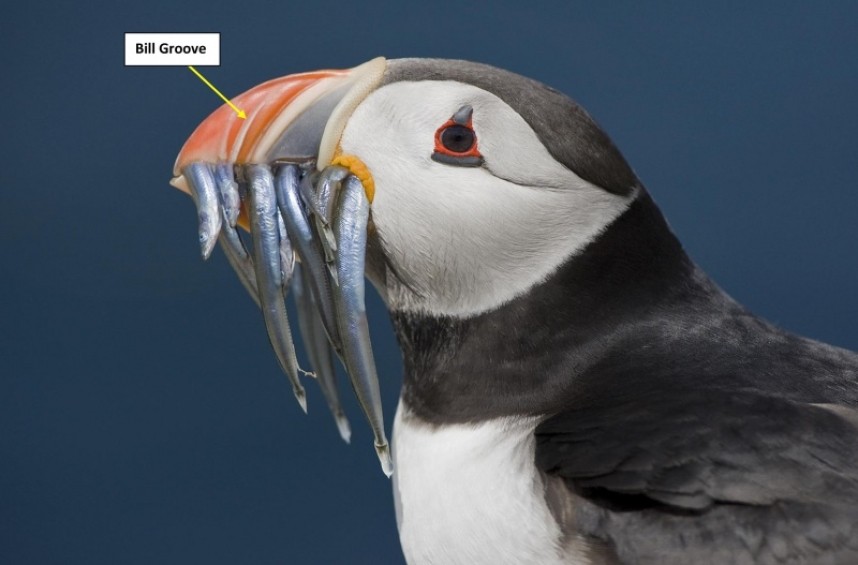
On our boat trip I photographed Puffins with different bill sizes and colours. So how do you age a Puffin? The answer has a lot to do with that groovy bill! In a Puffins first late summer and winter as a juvenile it has a dark small bill with little sign of colour or any grooves. The following year, known as its first year, is when the first groove starts to develop along with those beautiful bill colours we love so much. The groove becomes a little more defined in its second year but by the third year most Puffins have one and a half grooves.
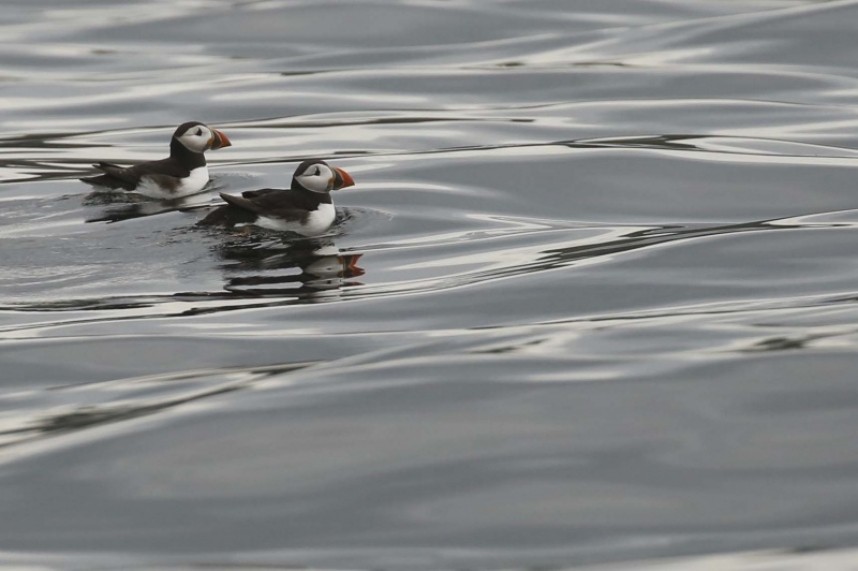
Atlantic Puffin (adults) 16 July 2020 © Richard Baines
In their first few years of life many Puffins visit a variety of breeding colonies before finally settling down to one colony. A Puffin aged four should have two grooves and maybe even signs of a third when it’s older than four. At this two-groove stage most Puffins start breeding, settling down into a very different family groove.
Richard Baines YCN



 Back to Blog
Back to Blog
